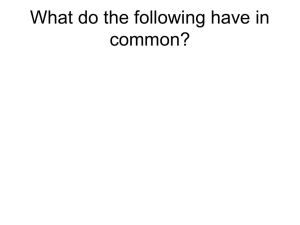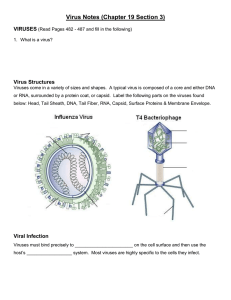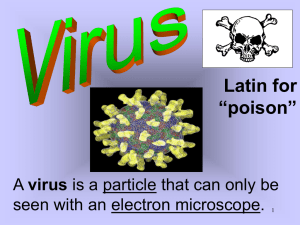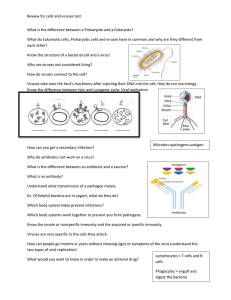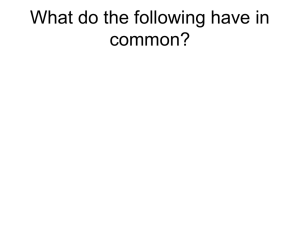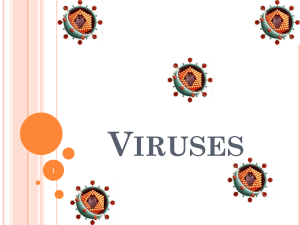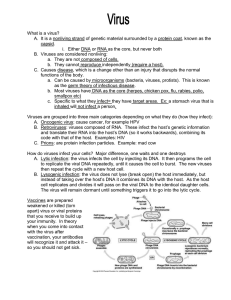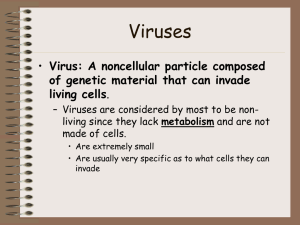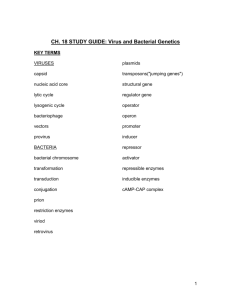b) HIV, c) the tobacco mosaic virus, and d) the... cell. The virus’ genetic material enters the host cell, and... Figure 2.2:
advertisement
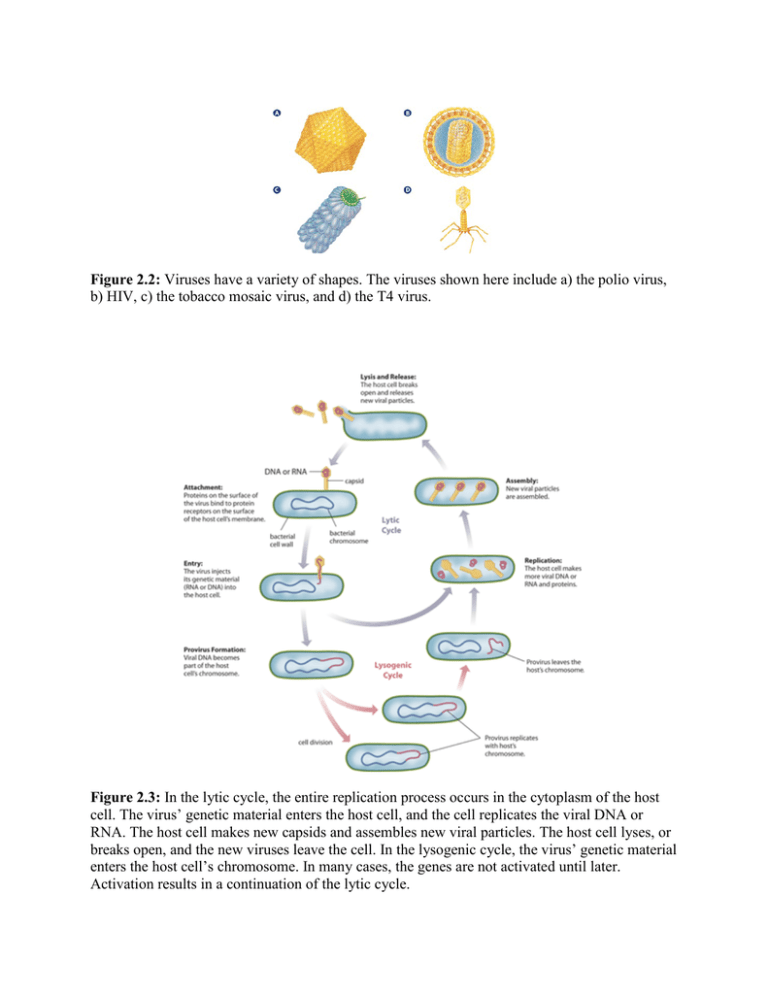
Figure 2.2: Viruses have a variety of shapes. The viruses shown here include a) the polio virus, b) HIV, c) the tobacco mosaic virus, and d) the T4 virus. Figure 2.3: In the lytic cycle, the entire replication process occurs in the cytoplasm of the host cell. The virus’ genetic material enters the host cell, and the cell replicates the viral DNA or RNA. The host cell makes new capsids and assembles new viral particles. The host cell lyses, or breaks open, and the new viruses leave the cell. In the lysogenic cycle, the virus’ genetic material enters the host cell’s chromosome. In many cases, the genes are not activated until later. Activation results in a continuation of the lytic cycle. Figure 2.4: Retroviruses contain an enzyme that causes the host cell to copy viral RNA into DNA. This DNA becomes a provirus that continues to produce new viruses without destroying the cell.

